| Published in Attractions / Places of Interest |
The Chapel of Bones, Évora, Portugal
The Chapel of Bones (Capela dos Ossos) in Évora, Portugal, is one of the most popular tourist attractions in Évora and a key part of the city's UNESCO World Heritage status.
Located within the larger Church of São Francisco, this site was constructed by Franciscan friars in the late 16th century as a solution to the overcrowding of local cemeteries.
By relocating approximately bones of 5,000 corpses into this chapel, the monks aimed to create a space that would remind visitors of the transience of life and the inevitability of death. On the roof of chapel is written the phrase
"Melior est dies mortis die nativitatis (Better is the day of death than the day of birth)"
(Ecclesiastes, 7, 1) from Vulgate.1
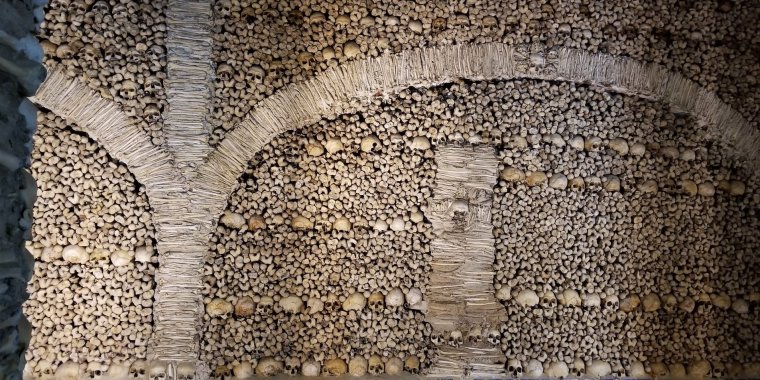
Wall of the chapel with skulls and bones. Photo: D. Stefanita
Historical Context
The Chapel of Bones was built by Franciscan monks during the late 16th century, at a time when Évora was experiencing both a period of cultural and architectural flourish as well as a population growth.
With several overcrowded cemeteries in the region, local monks sought a solution to honor the dead while addressing the space problem in graveyards. Instead of merely relocating the bones, they decided to build the chapel and use human remains as part of its structure. This not only preserved the bones but also aligned with the Franciscan ideals of modesty and the reflection on mortality.
An inscription above the chapel door reads: “Nós ossos que aqui estamos, pelos vossos esperamos,” which translates to “Our bones, are here, waiting for yours.”
Architectural Features
The chapel itself is a small yet intricately designed space. Its walls and ceilings are adorned with skulls and bones arranged in elaborate patterns. The architectural style reflects both Baroque and Renaissance influences, featuring three naves that measure approximately 18.7 meters by 11 meters (61.3 ft by 33 ft) in size. Natural light filters through small gaps in the walls, creating an atmosphere that is both eerie and contemplative.
The interior design draws inspiration from similar ossuaries in Europe, particularly from Milan's San Bernardino alle Ossa. The bones are not merely decorative; they serve a deeper purpose by inviting visitors to confront their mortality.
The chapel also contains two complete skeletons displayed prominently, alongside various religious statues and paintings that further enhance its somber ambiance.
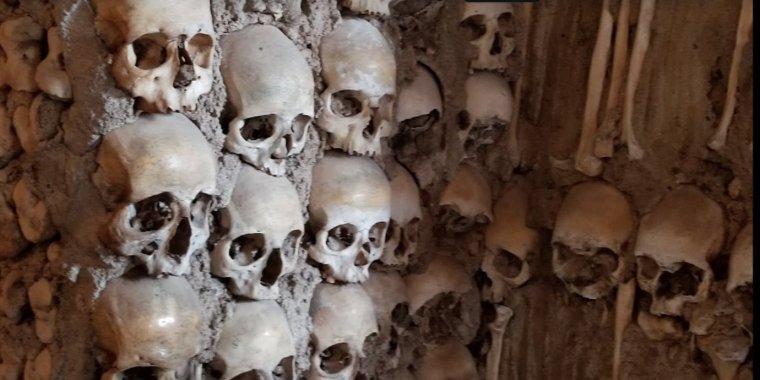
Column detail. Photo: D. Stefanita
Philosophical Significance
The Chapel of Bones serves as a powerful reminder of human fragility and the inevitability of death. A poem by Padre António da Ascenção, (translation by Father Carlos A. Martins) hangs within the chapel, urging visitors to pause and reflect on their own mortality:
“Where are you going in such a hurry, traveler?
Pause...do not advance your travel.
You have no greater concern than this one:
That which is now before your eyes.
Recall how many have passed from this world,
Reflect on your similar end.
There is good reason to do so;
If only all did the same.
Ponder, you so influenced by fate,
Among the many concerns of the world,
So little do you reflect on death.
If by chance you glance at this place,
Stop ... for the sake of your journey,
The longer you pause, the further on your journey you will be.”
This sentiment encapsulates the chapel's purpose: to encourage contemplation about life’s fleeting nature amidst the backdrop of an ornate yet unsettling display.
Cultural Impact
Évora's Chapel of Bones has become one of the city’s most popular attractions, drawing visitors from around the globe who seek to experience its unique blend of beauty and horror.
It stands as a significant cultural landmark within Évora, which is recognized as a UNESCO World Heritage site for its rich historical architecture and cultural significance.
While some may find its decor unsettling or grotesque, many appreciate it as an artistic expression that challenges societal norms regarding death and remembrance.
A Parallel with Theravada Buddhism
This theme of reflecting on mortality resonates deeply with practices found in Theravada Buddhism, particularly through Maraṇasati, or mindfulness of death. This meditation encourages practitioners to remember that death can strike at any moment, fostering a sense of urgency in living each moment fully.
Just as visitors to the Chapel of Bones are prompted to confront their mortality, Maraṇasati invites individuals to reflect on their impermanence and the transient nature of life.
In Theravada tradition, meditation on death serves several purposes: it cultivates a sense of spiritual urgency (Saṃvega), promotes renunciation (Nekkhamma), and ultimately leads to greater appreciation for life itself. Through this practice, individuals learn to let go of attachments and fears that often lead to suffering.
This parallel enhances our understanding of how different cultures address similar existential themes through art and meditation.
Sources
• https://www.visitevora.net/en/bones-chapel-evora
• https://www.atlasobscura.com/places/portugals-chapel-bones
• https://en.wikipedia.org/wiki/Maraṇasati
• https://www.dhammawheel.com/viewtopic.php?t=36199
• https://officertravels.com/chapel-of-bones-in-evora
• https://travelphotodiscovery.com/capela-dos-ossos-chapel-of-bones-evora
Footnotes
1. The Vulgate is a late-4th-century Latin translation of the Bible. It is largely the work of Jerome who, in 382, had been commissioned by Pope Damasus I to revise the Vetus Latina Gospels used by the Roman Church. (Wikipedia)
YOU MAY ALSO LIKE
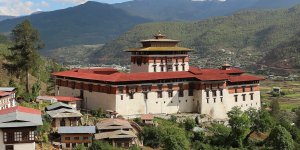
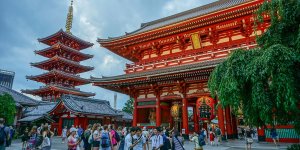
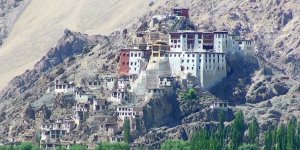
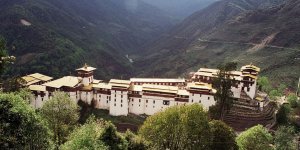


 If you own or manage a travel-related business such as a hotel, a bed-and-breakfast, a restaurant, a pub or a cafeteria, you can create a web page for your business for free on Titi Tudorancea Travel Info. » |